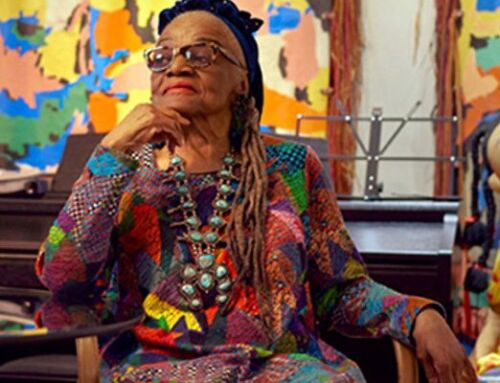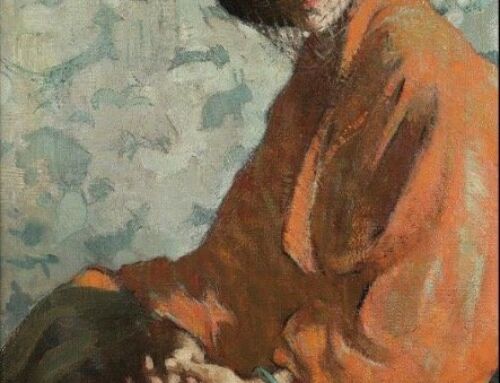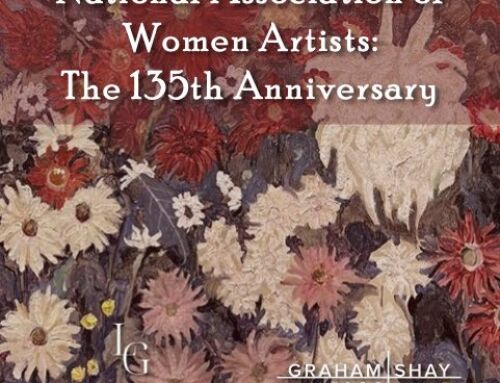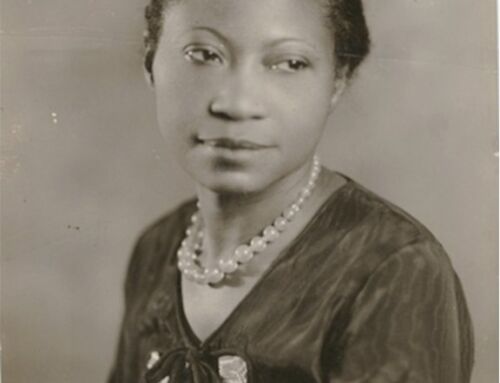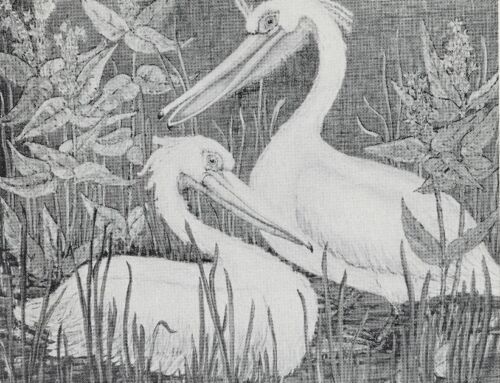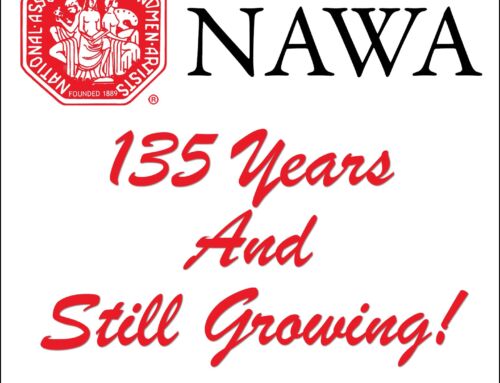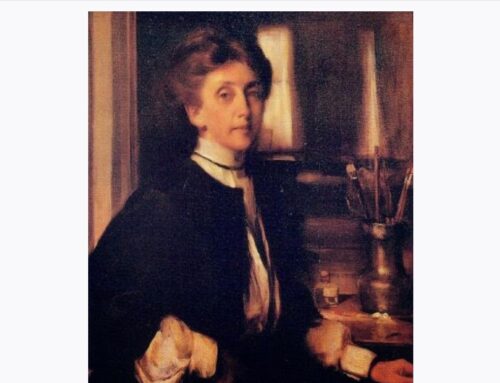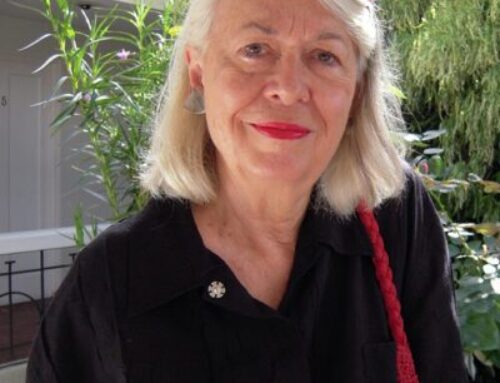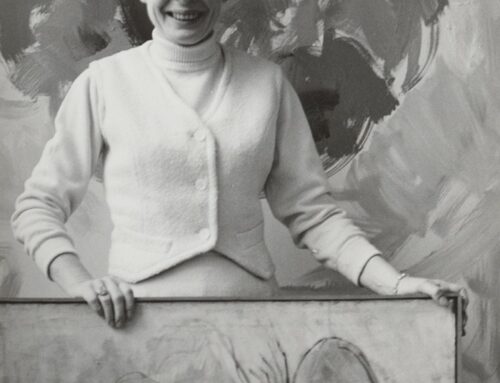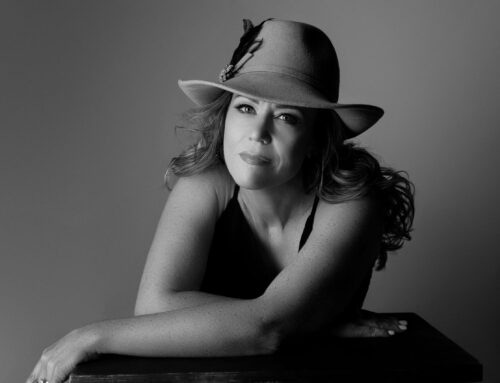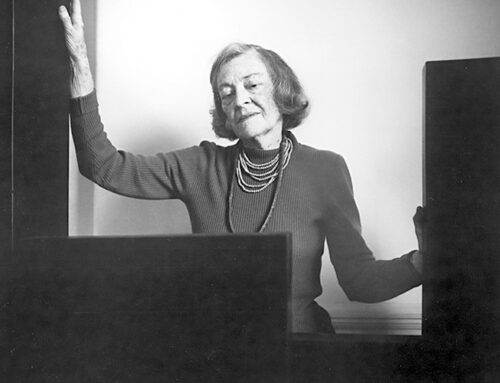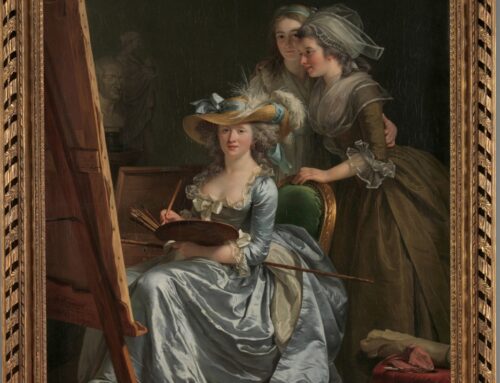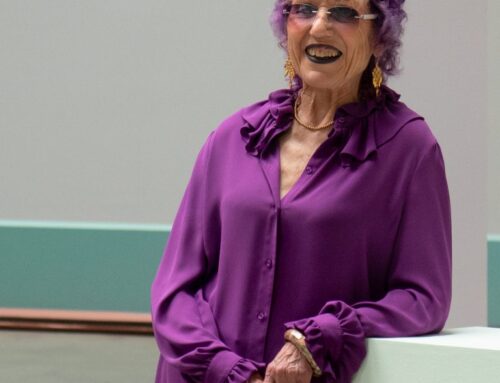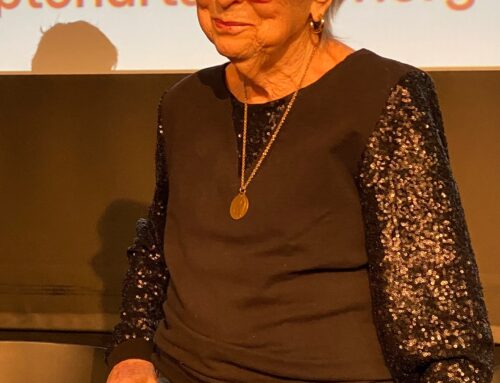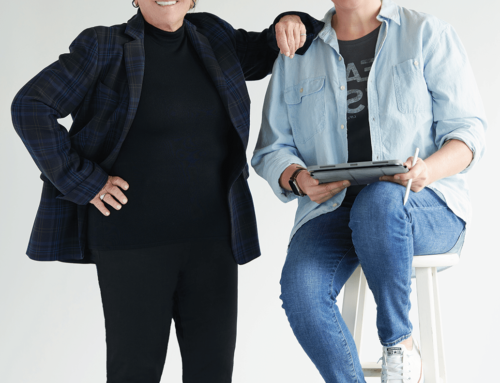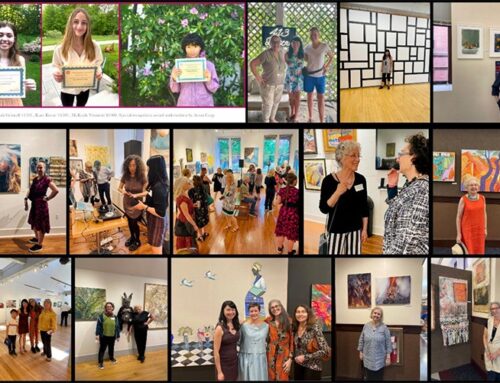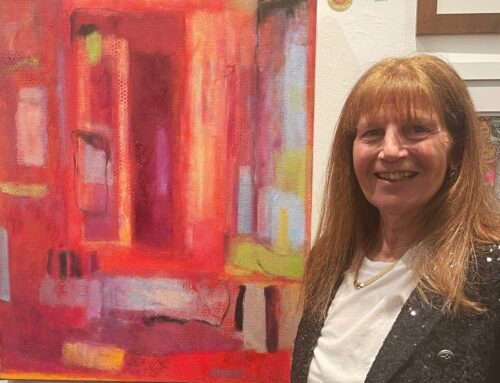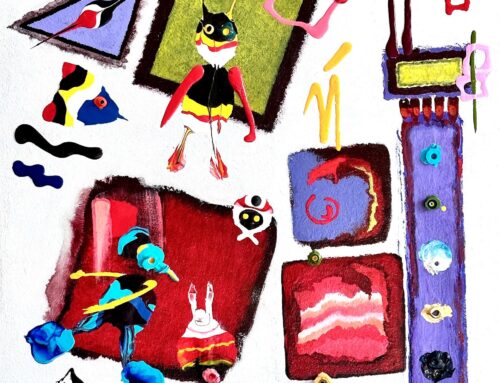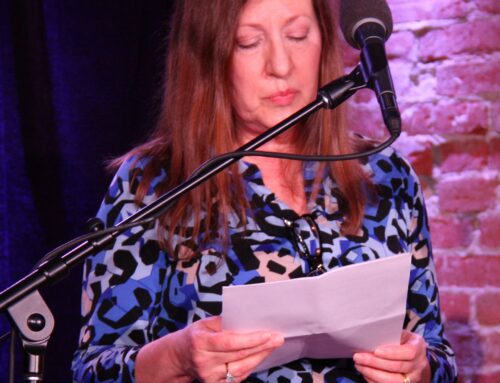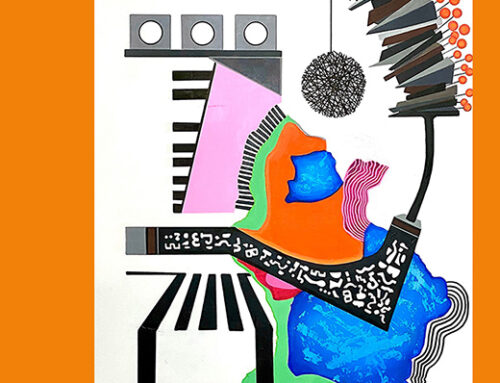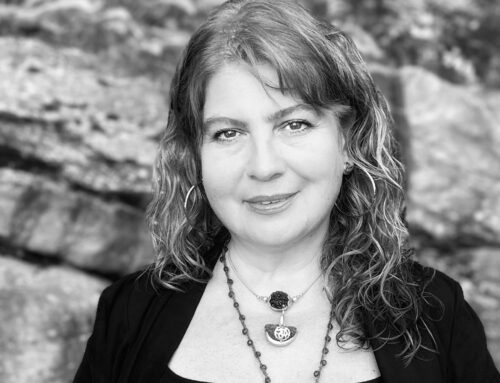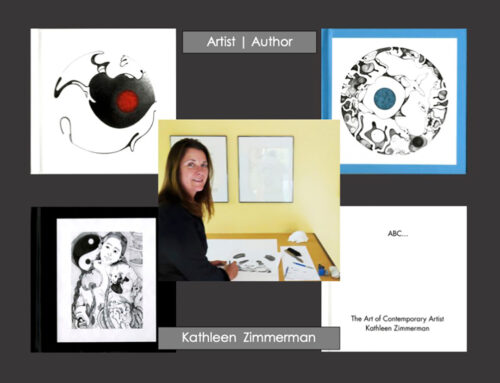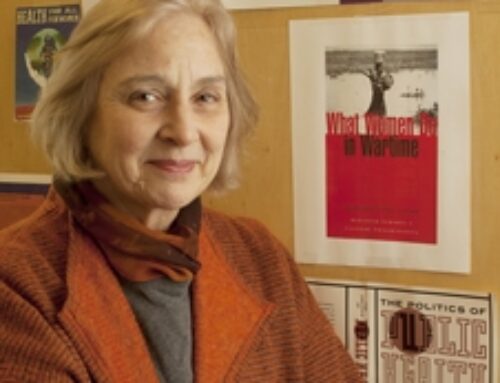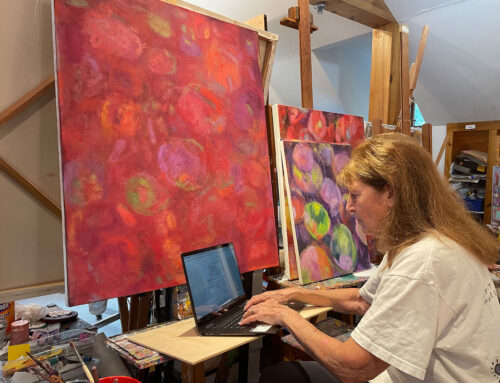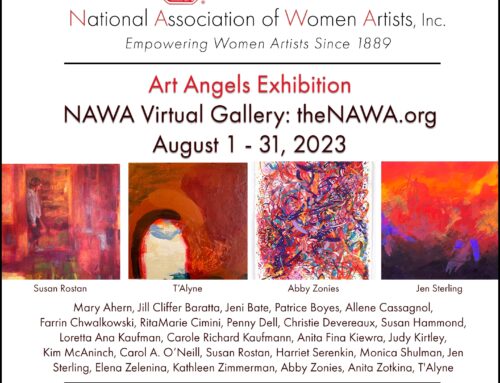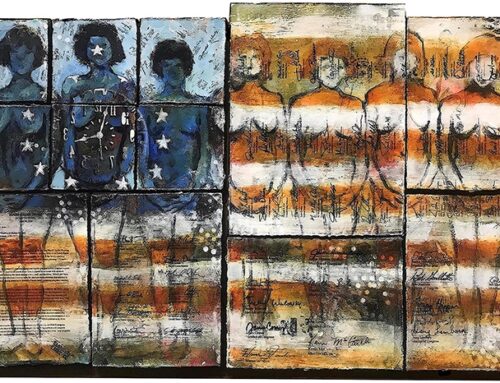NAWA Luminaries – Nell Blaine
Nawa Luminaries is the intersection of NAWA’s Historical Research and current exhibitions around the United States highlighting celebrated NAWA members. The exhibition at the Southampton Arts Council, Heroines of the Abstract Expressionist Era: From The New York School to The Hamptons at the Southampton Arts Center in Southampton, New York closed on December 17, 2023. The works of the 35 artists in the show are part of the collection of Rick Friedman and Cindy Lou Wakefield and included paintings by Audrey Flack, Nell Blaine, Dorothy Dehner, Buffie Johnson, and Louise Nevelson, all NAWA Luminaries.
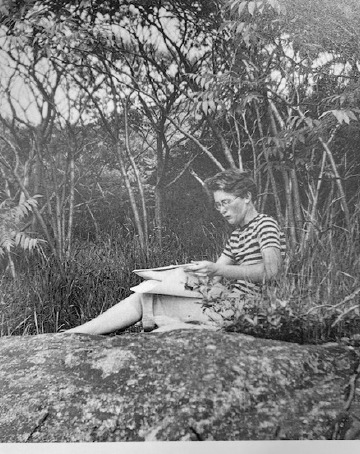
1943 Nell Blaine-Photograph First Trip to Gloucester-by MA Sawin
“My true subject is the life of forms as revealed by light. Light reveals or conceals as it moves. Even colors in close values can give a feeling of light saturation. Light can be mysterious, or it can dazzle. I want a free use of color to give me equivalents of these sensations. I have no desire to copy shadows or light patches, although they give me clues and directions and help me structure space.” Nell Blaine
Born in 1922, Blaine grew up in Richmond, Virginia, against the backdrop of the Depression. It wasn’t until she was two that her parents realized she was vision-impaired and had her fit with eyeglasses. The sudden visual stimulation was remarkable. Blaine drew throughout her childhood, and at sixteen, she enrolled in the School of Art of the Richmond Professional Institute. Painting in a tight, realistic manner, she also studied advertising, where posters with large flat areas of color opened up an appreciation for modern art. After two years at RPI, Blaine left for a job in an advertising agency and enrolled in an evening course taught by Worden Day, a painter who had studied with Vaclav Vytlacil, a student of Hans Hofmann. Day passed on many of Hofmann’s lessons and encouraged Blaine to go to New York to study directly with Hofmann.
Blaine did so despite her mother’s protests and belief that the artist’s life was sinful. Between 1942 and 1944, Blaine was a scholarship student, classroom monitor, and disciple of Hofmann, who stressed a “free use of color” as opposed to naturalistic or local color. Blaine wanted to represent nature, but not in a literal manner; she wanted to create “equivalents of sensations.” She used Hofmann’s word “empathize” to describe her process – her projection into nature and reflection into her work.
In 1944, at age 22, Blaine became the youngest member of the American Abstract Artists. She began to exhibit disciplined works of geometric and organic shapes in flat, unmodulated colors. They were mainly in black, white, and gray, with accents of pure primary colors. The same year, Blaine joined the Jane Street Gallery, one of the first serious artists cooperatives in N.Y.C., where she exhibited with Leland Bell, Louisa Matthiasdottir, and Hyde Solomon. The years of the Jane Street Gallery became a time of rebellion from Hofmann. For Blaine, this took working in a precise, nonpainterly style, a less intuitive approach than Hofmann taught. Her work evolved from the geometric abstractions of the mid-1940s to the cubist representational work of 1949-50 to the Hélion and Léger-inspired “machine” figurations of 1950-51.

1986 Nell Blaine-Campanula Oil on canvas-30×24
The 1948 Bonnard retrospective at the Museum of Modern Art affected the Jane Street painters’ transition from abstraction to representation. In addition, a pivotal shift in her work followed her 1950 trip to Paris. In Paris, she allowed herself to work directly from nature, and it was after this trip that she began to synthesize nature and the pictorial.
Her first show at Poindexter Gallery included the 1955 painting Merry-Go-Round, which blended a Cubist, abstracted treatment of the figure, an all-over paint surface, a non-local use of color, and an unusual palette of flesh-tones, pale blues and greens, brown and gray. Two years later, Blaine used a similar palette but refined her brushstroke and organized the composition around a more naturalistic treatment in her painting Autumn Studio. In 1958, more assured, she made Green Cloth II, purchased by the Whitney Museum that same year.
In 1959, Blaine set off for a trip abroad, using the money she had made from sales at her 1958 Poindexter exhibition. She went to Greece, where her work continued to evolve in its painterly approach. This period was dramatically interrupted by Blaine’s illness. She was diagnosed with bulbar-spinal polio and eventually flown back to New York in an iron lung for treatment. The positive and supportive community that Blaine had established jumped in to help her. She had no family to support her financially. Still, she managed to support herself, even through her illness, with the sale of paintings, occasional awards, and a Guggenheim Fellowship.

1994 Nell Blaine painting “Autumn Afternoon in Garden” Photograph-Gloucester by MA Sawin
In a wheelchair, Blaine was forced to work on smaller canvases closer to her paintings. Her earlier paintings were made in the language of Abstract Expressionism, focusing on flatness, gesture, and the all-over paint surface. Blaine’s physical limitations freed her to approach painting differently. Although Blaine still worked with hatched strokes, her paintings after polio were less “staccato” than those made before her illness. There were solid areas of color, with more deliberate mark-making. Forms were more boldly delineated, and perspective more articulated. Despite the gradually increasing marginalization that Blaine and the other painterly figurative artists faced, her relationship with Ellie Poindexter sustained her career.
The indoor/outdoor scene, in which a still life or interior is set before a window, looking out towards an expansive view, is a recurrent motif in her oeuvre. Although Blaine was social, she was also determined to have complete privacy and independence when she worked (a situation more difficult to maintain after her illness).
She purchased her home in Gloucester, Massachusetts, in 1974, and for the rest of her life, would spend summers in Gloucester and winters in New York, painting in both homes. In addition, she received an unexpected legacy from a friend, the poet Howard Griffin. She inherited his house in the Austrian Alps and would make three painting trips there in the 1970s and 1980s. After Poindexter closed her gallery in 1976, Blaine exhibited with the Fischbach Gallery in New York. The Virginia Museum of Fine Arts presented a solo exhibition of her work in 1979, and she received an honorary doctorate from Virginia Commonwealth University in Richmond in 1985. The following year, she was named an Honorary Vice President of the National Association of Women Artists.
In 1984, she reflected on the advice she would give to other artists: “”Today I have young students and I often don’t know what to say to them. I think that if you only do your work and not go around and be in the ‘right place’ that you’ll never make it.” Later in her life, Blaine reflected on the importance of sustaining work and maintaining a place in the community and social life: “The only way to survive is to keep working and being involved and to have young people as well as contemporaries around…
In 1995, the year before Blaine’s death, two concurrent exhibitions at the Fischbach Gallery and Tibor de Nagy Gallery occasioned a review by Roberta Smith in the New York Times. Smith noted, “Her images glow, but they also pulsate with a kind of molecular energy. At times, she seems to have captured the incessant livingness of nature itself.”
Note: This biography draws from Martica Sawin’s Nell Blaine: Her Art and Life and Jennifer Samet’s unpublished dissertation, Painterly Representation in New York, 1945-1975, and Virginia Dortch, ed., Peggy Guggenheim and her Friends.
Susan M. Rostan, M.F.A , Ed.D. Co-Leader: NAWA Historical Research Team
Signature Member of the National Association of Women Artists
NAWA. Empowering Women Artists Since 1889



